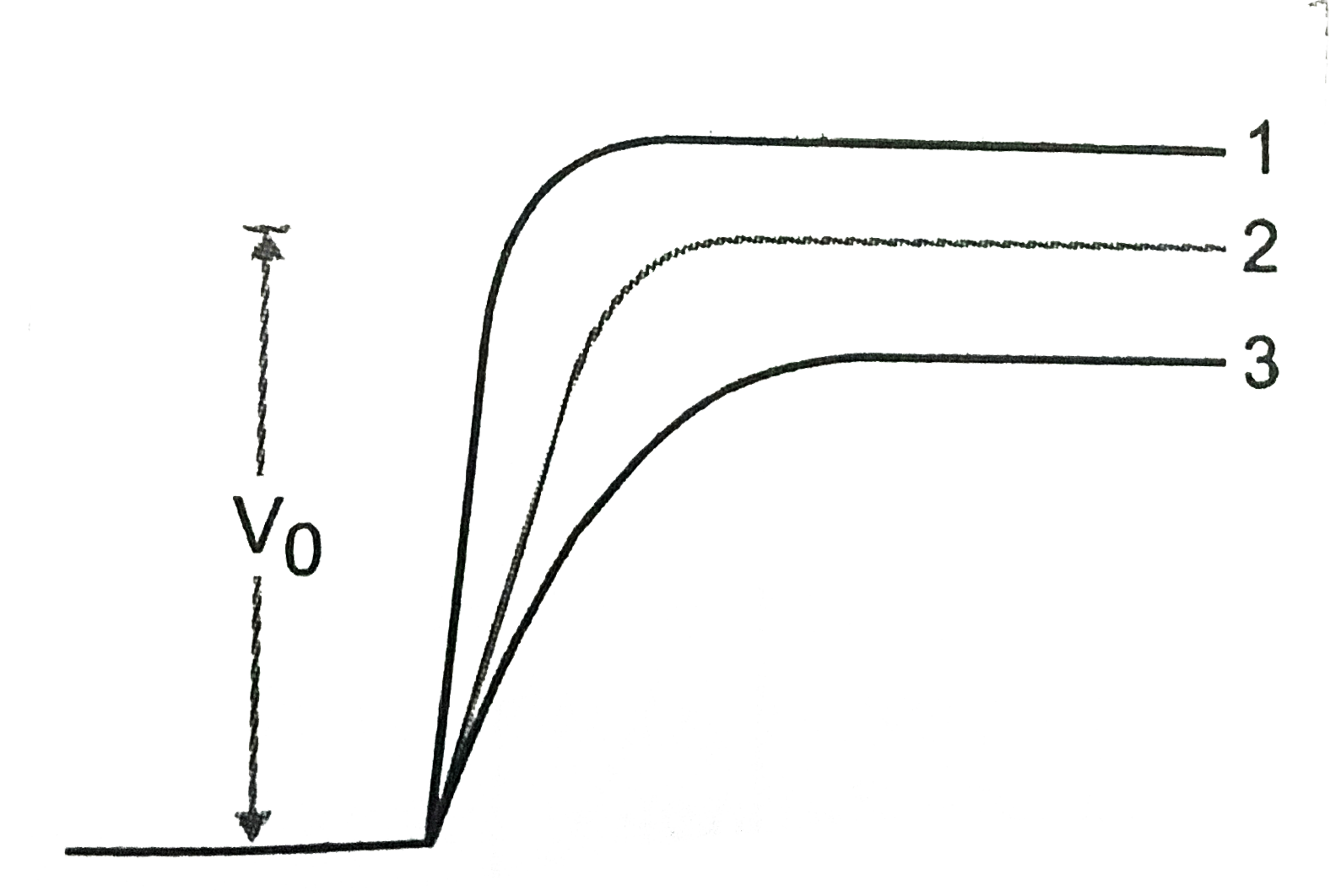In a p-n junction,a potential barrier of 250 mev exsists across the junction.A hole with a kimetic energy of 300 meV approaches the junction. Find the kinetic energy of the hole when it crosses the junction if the hole approached the junction (a)from the p-side and (b)from the n-side.Solution in Tamil
Potential barrier 'd'=250
Initial of hole =330meV
We know KE of the hole decerease when the juncetion is forward biased and increases when reverse biased in the given pn diode.
So
(a)Final KE = (300-250)meV
=50meV
(b) IntialKE=(300+250)meV
=550meV
Topper's Solved these Questions
Similar Questions
In a semiconductor,
View SolutionFind the luminous flux of 10 W source of 600 nm. The relative luminosity at 600 nm is 0.6.
View SolutionIn an experiment to measure the speed of light by Fizeau's apparatus, following data are used :
Distance between the mirrors = 12.0 km,
Number of teeth in the wheel = 180.
Find the minimum angular speed of the wheel for which the image is not seen.
View SolutionThe potential barrier exists across the junction is 0.2volt.What minimm kinetic energy a hole should have to diffuse from the p-side to the n-side if (a)the junction is unbiased,(b)the junction is forward-biased at 0.1volt and ©the junction is reverse-biased at 0.1volt?
View SolutionA potential barrier of 0.4V exists across a p-n junction. If the depletion region is 4.0xx10^(-7)m wide, what is the intensity of the electric field in this region? If an electron with speed 4.5xx10^(5)m//s approaches the p-n junction from the n-side, find the speed with which it will enter the p-side.
View SolutionIn Fig . V0 is the potential barrier across a p-n junction, when no battery is connected across the junction

View SolutionA potential barrier V volts exists across a P−N junction. The thickness of the depletion region is 'd'. An electron with velocity 'v' approches P−N junction from N-side. The velocity of the electron acrossing the junction is.
View SolutionDruing P-N junction formation when the electron and holes stops moving from P to N and N to P, then
View SolutionIn a p-n junction, the thickness of depletion region is 2xx10^(-7)m and potential barrier across the junction is 0.20 V (a) What will be the intensity of electric field in this region ? (b) if an electron, from n-side approaches the p-n junction with speed 5xx10^(5) m//s . then with what speed it will enter the p-side ?
View SolutionWhen a PN juction diode is forwards biased, energy is released at the juction due to the recombination of electrons and holes. This energy is in
View SolutionA potential barrier of 0.3 V exists across a P-N junction: If an electron with speed 4 xx 10^(5) ms^(-1) approaches this P-N junction from the N-side, the find the speed with which it will enter the P-side. Given mass of electron 9.1 xx10^(-31) kg
View SolutionThe potential barrier of a P-N junction diode is 50 meV, When an electron having energy 400 meV travels from P to N, after crossing the junction the energy of the electron is
View SolutionThe potential barrier existing across an unbiased p-n junction is 0.2 volt. What minium kinetic energy a hole should have to diffuse from the p - side to the n - side if (a) the junction is unbiased, (b) the junction is forward-biased at 0.1 volt and (c) the junction is reverse-biased at 0.1 volt ?
View SolutionA potential barrier V volts exists across a P-N junction. The thickness of the depletion region is 'd'. An electron with velocity 'v' approaches P-N junction from N-side. The velocity of the electron across the junction is
View SolutionThe potential barrier of a P-N junction diode is 50 meV, When an electron having energy 400 meV travels from N to P, after crossing the junction the energy of the electron is
View SolutionDruing P-N junction formation when the electron and holes stops moving from P to N and N to P, then
View Solution
